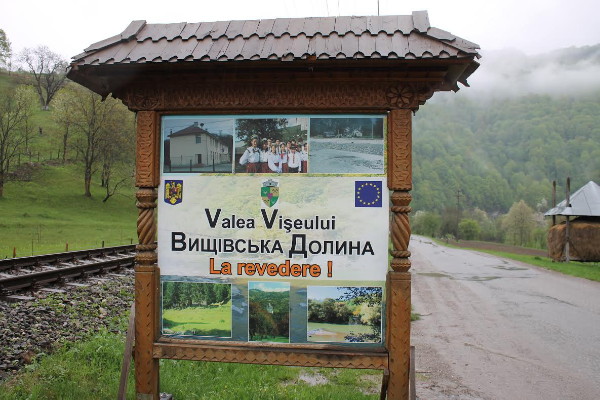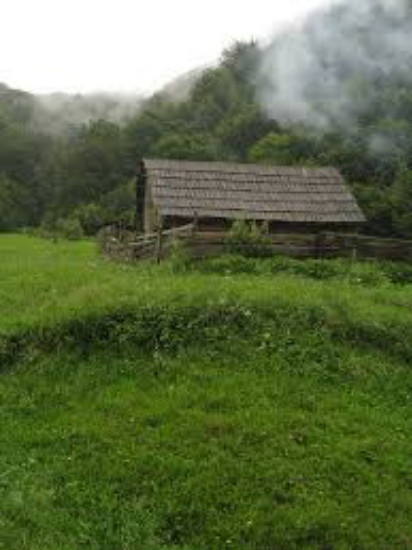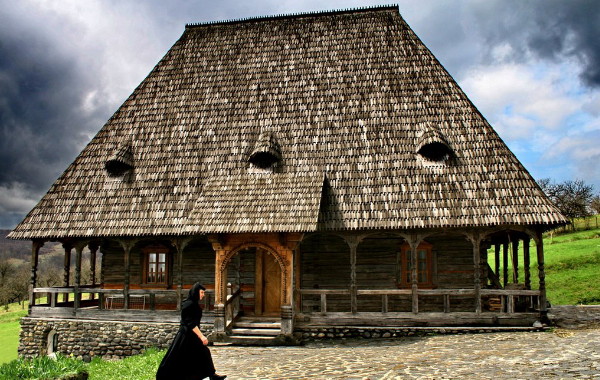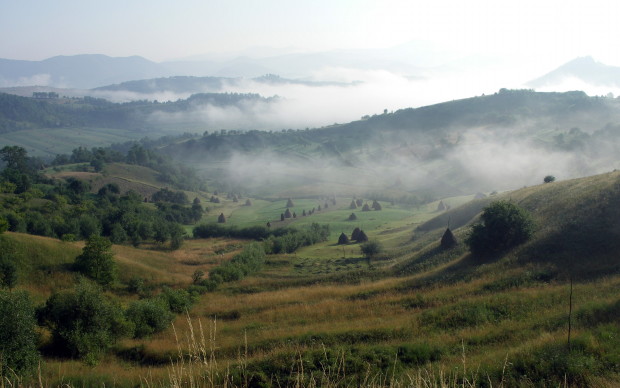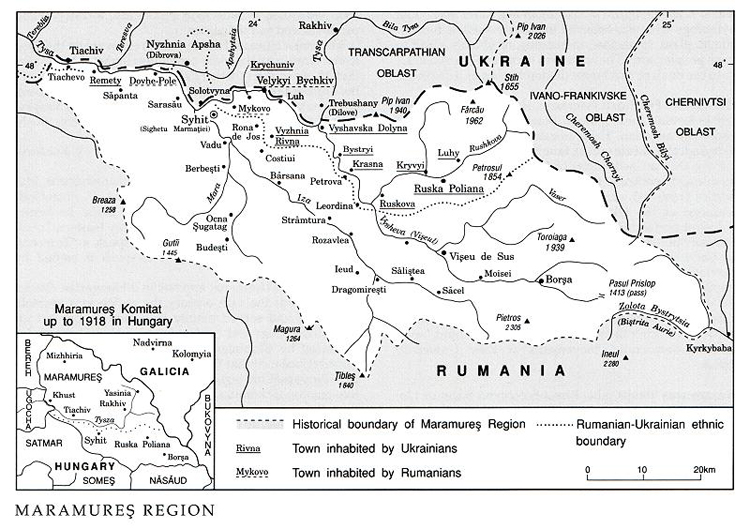Maramureş region
Maramureş region [Ukrainian: Марамарощина, Мараморщина; Marmaroshchyna, Maramorshchyna; Hungarian: Máramaros]. A historical-geographic region in the Maramureş Basin. Its larger, northern part is Ukrainian ethnic territory (eastern Transcarpathia), the inhabitants of which speak a Transcarpathian dialect of Ukrainian (see Transcarpathian dialects). The south is settled by Romanians.
The name Máramaros appears in a Hungarian charter in 1199. Until the 14th century the region was sparsely populated and served mainly as a hunting ground for Hungarian kings and nobles. In the 14th century it was colonized by Ukrainians from Galicia and Vlachs from Transylvania. At that time it was ruled by a voivode under the Hungarian tutelage. In 1385 it became an administrative-territorial komitat. After the partition of Hungary in 1526, the region was part of Transylvania until 1733, when it was reclaimed by Hungary, and it remained under Hungary’s control until 1918. In 1891 Máramaros komitat (10,354 sq km) had a population of 268,281: 122,528 Ukrainians, 64,957 Romanians, 45,679 Germans, and 33,610 Magyars (Hungarians). In 1910, 45 percent of the region’s population of 360,000 was Ukrainian, 24 percent was Romanian, 17 percent was Jewish, and the rest was German or Magyar. The region’s Ukrainians were Greek Catholics and belonged to Mukachevo eparchy. In the early 20th century a portion of them converted to Orthodoxy and were accused by the Hungarian government of being Russian agents. In the resulting show trials 9 peasants in 1904–6 and 96 in 1913–14 were sentenced to various terms of imprisonment.
After the dissolution of the Austro-Hungarian Empire the northern Maramureş region was annexed by Czechoslovakia and administered as a zhupa (county). The south was annexed by Romania. Because the new Czechoslovak-Romanian border along the Tysa River did not correspond to the ethnic border, much of the region's Ukrainian ethnic territory—800 sq km—became part of Romania.
Fourteen Ukrainian villages are now within Romania: along the Ruskova River, Poliany or Ruska Poliana (Romanian: Poienile de sub Munte, approx pop 8,000), Kryvyi (Repedea, pop 3,000), and Ruskova (Ruscova, pop 3,000); along the Vyshava (Vişeu) River, Krasnyi (Crasna, pop 2,000), Bystryi (Bistra, pop 3,000), Vyshavska Dolyna (Valea Vişeului, pop 1,200); and on the left bank of the Tysa River, Luh (Lunca la Tisa, pop 1,500), Velykyi Bychkiv (Bocicoiul Mare, pop 1,000), Krychuniv (Crăciuneşti, pop 1,500), Vyshnia Rivna (Rona de Sus, pop 4,000), Myhovo (Virişmort, pop 1,000; 300 Ukrainians), Dovhopole (Câmpulung la Tisa, pop 3,000; 550 Ukrainians), Tiachevo (Teceu, pop 700), and Remety (Remeţi, pop 2,000). Outside the territory of compact Ukrainian settlement, Ukrainians also live in the town of Vişeul de Sus (pop 13,000; 500 Ukrainians). In 1960 there were more than 30,000 Ukrainians in the Maramureş region. In 1971, 3,500 Ukrainians lived in the border town of Sighetul Marmaţiei (pop 40,000).
Under interwar Romanian rule Ukrainian community life in the Maramureş region was poorly developed. In the 1920s and 1930s the region’s Ukrainians relied on the cultural influence of the Bukovyna’s capital of Chernivtsi. The Greek Catholic church was largely responsible for preserving Ukrainian identity against the militant onslaught of Romanianization, as it had previously preserved it against Magyarization. In the 1930s, 11 Ukrainian Greek Catholic parishes and 3 of their chapters were subordinated to the vicar-general for Ukrainian Catholics in Romania. In the early 1920s the region's Ukrainians elected two representatives, Oleksander Ilnytsky and T. Bokotei, to the Romanian parliament. In 1926 Rev A. Sabo founded a Ruthenian party in Sighetul Marmaţiei, but it did not have a significant impact. In 1931 a branch of the Ukrainian National party in Romania was founded in the region, but it too was largely unsuccessful. The leading Ukrainian cultural and educational figure in the region at that time was the lawyer I. Odovichuk. In March 1939 the region's Ukrainians helped refugees who had fled from the Hungarian occupation of Carpatho-Ukraine.
The Vienna Arbitration of 1940 granted the Maramureş region to Hungary, which occupied it until 1944. In 1944–5 the region was occupied by the Soviet Army. In the winter of 1945 Transcarpathian Ukrainians took over the administration of Sighetul Marmaţiei and the Ukrainian villages. Soon thereafter, however, the region again came under Romanian rule, which was confirmed by the Paris Peace Treaty of 1947 (see Paris Peace Treaties of 1947). The Romanian administrative reform of 1968 established a province called Maramureş (6,215 sq km, 1980 pop 543,000) in the region.
Ukrainian cultural life in the region improved after 1948, when new educational rights were granted to Romania's national minorities. The Ukrainian lyceum (est 1948) and Ukrainian pedagogical school (est 1950) created in Sighetul Marmaţiei fostered a new generation of nationally conscious Ukrainian intelligentsia for Romania as a whole. In all the elementary schools in villages with a Ukrainian majority, teaching was conducted mostly in the Ukrainian language. Later, however, Romanian sections were introduced in most of them, and with time the language of instruction became Romanian. In the 1960s the pedagogical school in Sighetul Marmaţiei was closed down, and the Ukrainian, Romanian, and Hungarian lyceums there were amalgamated into one lyceum with three sections, the Dragoş Vodă Lyceum, where approximately 150 Ukrainian students study each year. In each of the sections instruction is conducted in the native language of the students, but general subjects, such as history and geography, are taught only in Romanian. Since 1980 the only elementary schools where teaching is conducted in Ukrainian have been those in Krychuniv, Poliany, and Vyshnia Rivna. Elsewhere Ukrainian has only been taught as a subject. Ukrainian reading rooms, clubs, and amateur groups are active in the villages.
In 1948 the Romanian authorities forced the region’s Ukrainian Catholic church and faithful to convert to Orthodoxy. In the churches liturgies are conducted in Old Church Slavonic, but sermons are delivered in Ukrainian. In the 1980s the region’s eight Ukrainian parishes and eight priests were placed under the authority of an archpriest of the Ukrainian Orthodox church in Romania, which is itself subordinated to the Romanian Transylvanian eparchy.
(See also Transcarpathia.)
BIBLIOGRAPHY
Wenzel, G. Kritikai fejtegetések Máramaros megye történetéhez (Pest 1857)
Bergner, R. In der Marmaros (Munich 1885)
Mihalyi, I. Diplome Maramureşene din secolul XIV şi XV (Sighetul Marmaţiei 1900)
Várady, G. ‘Das Máramaroser Comitat,’ in Die österreichisch-ungarische Monarchie in Wort und Bild: Ungarn, vol 2, pt 2 (Vienna 1900)
Hadzhega, V. ‘Dodatky k istorii rusyniv i rus'kykh tserkvei: Studii istorychno-arkhivni: Marmarosh,’ Naukovyi zbirnyk Tovarystva Prosvita, 1 (Uzhhorod 1922)
Kubijovyč, V. Păstoritul în Maramureş (Bucharest 1935)
Filipaşcu, A. Le Maramures (Sibiu 1944)
Pavliuk, M. ‘Do istoriï ukraïns'kykh sil Maramoroshchyny,’Novyi vik (Bucharest), nos 134–6 (1957)
Pavliuk, M.; Robchuk, I. ‘Rehional'nyi atlas ukraïns’kykh hovirok Rumuniï,’ in Pratsi XIII Respublikans’koï dialektolohichnoï narady, ed F. Zhylko (Kyiv 1971)
Niculescu, I. (ed). Judeţul Maramureş (Bucharest 1980)
Pavliuk, M.; Robchuk, I. Ukraïns'ki hovory Rumunii: Diialektni teksty (Edmonton–Lviv–New York–Toronto 2003)
Mykola Pavliuk, Arkadii Zhukovsky
[This article originally appeared in the Encyclopedia of Ukraine, vol. 3 (1993).]
.jpg)
